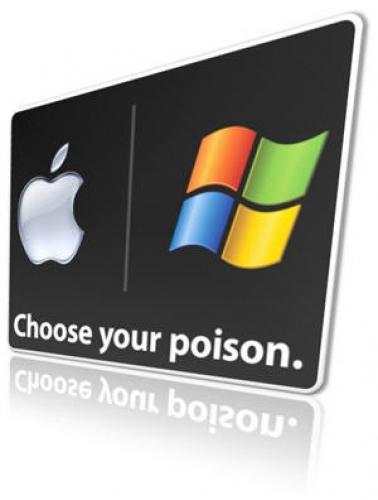 A friend sent me an update regarding the latest buzz over at Microsoft. Just recently, Microsoft has launched a page comparing Microsoft's (Windows) OS vs Apple's OS (MacOS). I am a Mac-newbie and I don't have enough time to research on this thing so I really can't say much whether Microsoft is doing at least a "decent" comparison. I mean, it's a Microsoft site, what can you expect right? However, what I can suggest is if you're like me who's Apple/Mac newbie, then don't just chew everything that's posted on the site. And just the same, if you're a Microsoft/Win newbie, don't just chew everything said on the Apple/Mac camp.
A friend sent me an update regarding the latest buzz over at Microsoft. Just recently, Microsoft has launched a page comparing Microsoft's (Windows) OS vs Apple's OS (MacOS). I am a Mac-newbie and I don't have enough time to research on this thing so I really can't say much whether Microsoft is doing at least a "decent" comparison. I mean, it's a Microsoft site, what can you expect right? However, what I can suggest is if you're like me who's Apple/Mac newbie, then don't just chew everything that's posted on the site. And just the same, if you're a Microsoft/Win newbie, don't just chew everything said on the Apple/Mac camp.In any case, my take on this is that, IA x86 hardware has really gotten strong and very powerful over the last several years and a lot of OS and applications has gotten a lot easier to learn and use. Maybe Microsoft is seeing it in the same light, because in the past, going from DOS to Unix or to OS2 or to Windows or to Mac is requires a lot of learing curve.

Besides, I only have gripes with how software seem a bit lagging behind hardware development. Don't get me wrong, I know that the software has gotten quite improved too but what I'm saying is that, while we have 6cores/12threads, how many "real life, regular, day-to-day, consumer-level" can take advantage of this hardware's power? True, Microsoft Windows (and other advance OS) support multi-core and multi-threading and multi-processing (and host of other "multi-this-that") but these hardware needs heavy software uplift to be very very useful to most everyone.
Case in point, the current Intel EE Gulftown is currently relegated to those multimedia-savvy users, workstation-type workload, high-end enthusiasts and gamers. And I think the main reason why that's the target market segment is mainly driven with the "usage" model. This means that either the software is lagging behind to take advantage of multi-core, or usage model has stopped to just very few useful applications (listening to music, while browsing the web, and doing some downloading stuff in the background, while the anti-virus is checking every activities with the PC).
Anyway, I have swayed much on the topic so I'll stop before I made this simple post into a full blown article (which would suck for me) because I have a lot of things going in my brain when looking into this topic.
PCs are designed for work and play, with features you need to get things done on the job or at school and have fun at home or on the go. From easily sharing Microsoft Office documents to watching HDTV and Blu-ray movies, PCs help you do it all.
Source:Microsoft
No comments:
Post a Comment